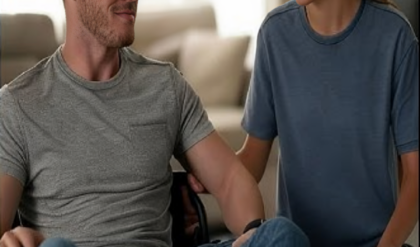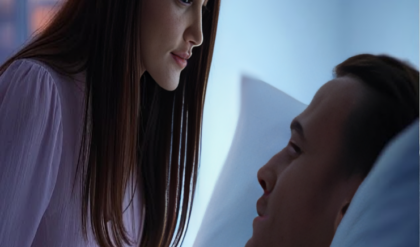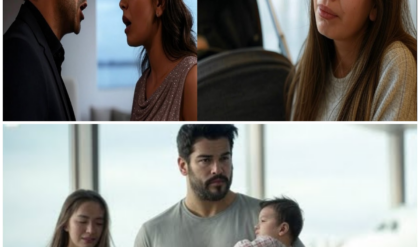How the royals responded spared public outrage

2023 © Netflix
On 31 August 1997, Princess Diana tragically died in Paris, at the same time that Queen Elizabeth II was visiting Balmoral. Following Diana’s death, Her Majesty then chose to remain in Scotland, with Prince William and Prince Harry.
The late Queen’s movements in the wake of Princess Diana’s death (or lack of, should we say) are chronicled in the new season of The Crown. A fictionalised account, it’s nonetheless true that the then-monarch was expected by many to return home from Scotland to mourn publicly, leaving her family behind.
But she did not – meaning that when the Queen did arrive at Buckingham Palace, a day earlier than she was initially expected to return, it was only after crowds of strangers, people who never knew Diana, had made the journey to pay their respects.
Rows and rows of flowers were left in London, as the public gathered to pay tribute to the “People’s Princess”, as Tony Blair (Prime Minister at the time) called Diana.
Then came public outage, as biographer, historian and broadcaster Sarah Gristwood told Cosmopolitan UK, when reflecting on what really happened after Diana’s tragic death.
Did the Queen stay at Balmoral after Diana died?
The Queen faced major criticism for not returning to London immediately after Princess Diana’s death.
Reflecting on the mood at the time, Gristwood said, “You can absolutely see why they [the royal family] said they felt their first responsibility was to support Diana’s sons, to keep them as safe as possible from media intrusion, from having to witness the scenes of mourning in London” but that it became apparent that it was “not necessarily the right decision, not necessarily that simple” for the Queen to stay away from London.
“Looking back, one wonders why, perhaps, the Queen couldn’t have flown South even for a day, perhaps leaving the boys safely at Balmoral. It’s not as if she’d have to go to Edinburgh Airport and stand in line for EasyJet,” she added.
Regardless of whether or not the Queen made the correct decision in hindsight (Princess Anne did later defend her mother’s position), the public did not side with the royal family, with many people admonishing the Queen for not returning to London sooner.
“I think [the royal family] were quite shocked by by just how far the degree of hostility had gone,” said Gristwood. “It’s possible that if Diana’s death had come at a time when the royal family weren’t at Balmoral, when they were down in London, Windsor, whatever, they’d have been a bit less out of touch with what was going on. When they are there, they are, I think, quite detached from modern realities. They did stay up there until the pressure from press, and possibly politicians, Palace officials, got too much.”
Did the Queen address the nation?
As Gristwood points out, the Queen did go on to share a public tribute to the Princess of Wales, addressing the nation in a live broadcast, the day before Diana’s funeral.
Speaking as “your Queen and as a grandmother,” Queen Elizabeth II said: “I want to pay tribute to Diana myself. She was an exceptional and gifted human being. In good times and bad, she never lost her capacity to smile and laugh, nor to inspire others with her warmth and kindness. I admired and respected her – for her energy and commitment to others, and especially for her devotion to her two boys.”
Alluding to her absence, the Queen added: “This week at Balmoral, we have all been trying to help William and Harry come to terms with the devastating loss that they and the rest of us have suffered. No-one who knew Diana will ever forget her. Millions of others who never met her, but felt they knew her, will remember her.
“I for one believe that there are lessons to be drawn from her life and from the extraordinary and moving reaction to her death. I share in your determination to cherish her memory.
“This is also an opportunity for me, on behalf of my family, and especially Prince Charles and William and Harry, to thank all of you who have brought flowers, sent messages, and paid your respects in so many ways to a remarkable person.”
Did the Queen bow her head during Diana’s funeral?

THOMAS COEX
The day after her broadcast, the Queen surprised the nation by bowing her head as Diana’s casket passed her during the funeral procession.
“She spontaneously bowed her head as Diana’s coffin went past, which is not the traditional thing for the Queen to do, and very quickly support did bounce back,” remembers Gristwood.
It was a clear break of royal protocol, but one which the public welcomed as a way of paying respect to Princess Diana.
In another break from tradition, Buckingham Palace flew the Union Flag at half-mast on the day of Diana’s funeral, following pressure from the public to do so.
Is The Crown likely to affect the royal family’s popularity?
While The Crown is based on true events, not a true depiction of events, it’s possible the series could sway public opinion by bringing up memories of a troubling time for the royal family. Speaking before the release of the series, Gristwood noted that public’s response to the episodes could go either way.
“I guess the question is, really, whether revisiting that week of September 97 will revive feelings of public disapproval of the royal family, or whether the fact that The Crown will presumably be showing it from their point of view, behind the scenes as it were, will actually foster sympathy, that we’re only going to know when we’ve actually seen the scenes themselves.”











